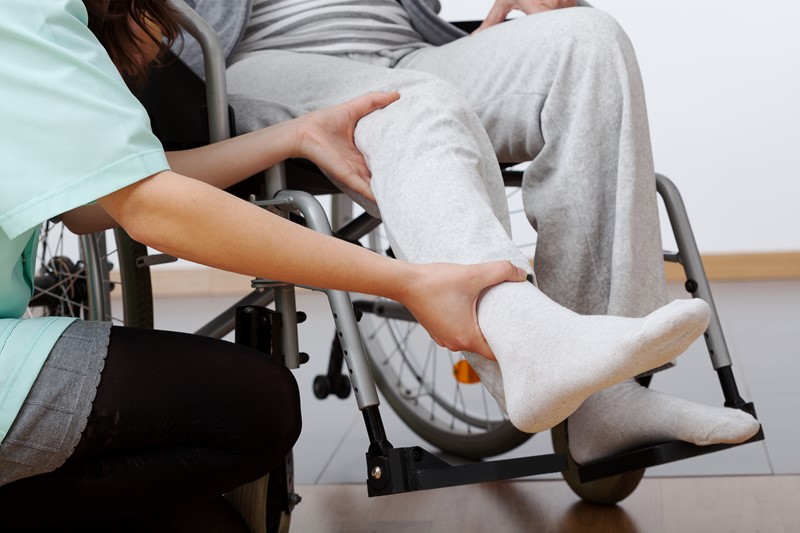Reading Matt Hancock’s speech at the NHS Expo 2018 – My vision for a more tech-driven NHS, it was good to see his views on how the National Health System (NHS) could save lives through adopting modern technologies. Matt spoke about the limitations of hospitals operating IT systems – ones that don’t talk to each other, how Primary Care Providers, social care, pharmacies and ambulatory care are still unable to connect due to their disparate systems, and the NHS’ continued reliance on fax machines. This results in ongoing frustrations for clinicians who use these slow and broken systems, plus the adverse effect for patients to receive sub-optimal care.
The key to effective care delivery, is the ability for clinicians in both the acute and community settings to communicate efficiently with the right information and minimal effort. This is especially true for patient referrals where it is necessary to get the right treatment options in a timely manner. A large number of patient referrals occur between ambulatory care providers such as Primary Care Providers, to an acute care provider, for instance specialist services in a hospital setting. Not only is it important to have common standards for the content of a referral, it is just as important to have common transport standards – as well as common implementation guidance – for the secure exchange of electronic health information, which can then be implemented in a consistent, scalable and repeatable manner.
Today the way a referral is sent and received is increasingly important, as is the medical information it contains. It’s not just the way a referral is compiled that provides the receiver with clinical information to make an informed decision, but if that referral ‘disappears’ between the sender and the receiver, an opportunity to provide timely care for the patient has been missed. There is the need to address systematic structures, tools and processes for information creation, transfer, receipt and recognition by the sending and receiving healthcare providers, to ensure the right information is provided in a timely manner.
Who are the Senders and Receivers?
Sender
A Primary Care Provider is in the middle of a clinic visit with a patient and determines that the patient needs to be referred to a hospital and/or specialist. They document the encounter in their electronic medical record (EMR) using a standard referral template and prepare the consultation request for the specialist. The referral is addressed to the appropriate specialist, specialty or provider organisation and is then printed to be sent to the specialist’s EMR system – which in this case is a fax machine.
Alternatively, the Primary Care Provider will directly submit a referral to the healthcare organisation via the fax number (Orion Health has the ability to receive a fax). They can use their available generic referral template. All referrals sent via the supplied fax number will be routed to the Orion Health Clinical Referrals solution. The solution accepts the referral and updates it to reflect it has been ‘received’ – but most importantly an acknowledgement can be sent back as received once the referral details have been acknowledged. Or if the Primary Care Provider has access to a full electronic referral system they can create an end-to-end referral that is a living document that provides the ability to initiate safe and rapid clinical transitions.
Receiver
The service receives the referral request and it is processed according to the specific context. In accordance with the organisation’s practice policies and workflow, the receiver (specialist, nurse or administrator) reviews the content and orders any additional tests to be performed for the patient prior to the specialist appointment. Any discrete data elements and any additional content from within the referral can be added to the specialist’s EMR (date time and source stamped). Using electronic referrals instead of a paper-based fax process dramatically reduces misplaced or lost referrals. This also ensures the right clinical information is sent to the correct receiver in a timely manner, to provide timely ongoing treatment and care.
The Auckland region in New Zealand have streamlined their referrals process by using an electronic system. The three District Health Boards (DHBs) of the Auckland region – Auckland, Counties Manukau and Waitemata – together serve over 1.5 million people. Each DHB has particular areas of specialty and population profiles. This, in conjunction with the close proximity of the DHBs, means there is a large amount of migration and crossover of patients as they move between providers.
There was a high number of paper-based referrals being sent between the DHBs and health providers across Auckland. There was a need to implement an electronic system that could improve communication and processing time of referrals. The result is the ability to integrate information across the whole health system, there are standardised referral templates and simplified workflows, healthcare providers can immediately view relevant referral information, reducing duplication and errors.
With the new electronic referrals system, there is now improved legibility, completeness, and accuracy, and there has been a reduction in errors that previously occurred, this was due in part to missing information or lost referrals. It now takes less time to process a referral, which provides the opportunity for clinical advice to be given, at times immediately.
To learn more about the electronic referral system, read our case study below.



